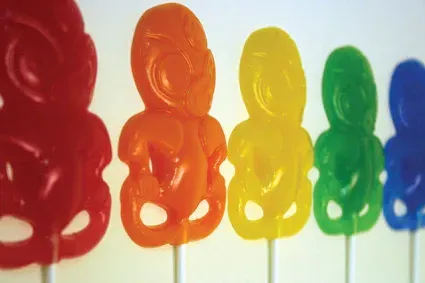Plastic Maori
Written by

When plastic tiki replace pounamu pendants and tukutuku panels are made out of computer keyboards, can these objects retain their cultural integrity? Is synthetic still authentic?
When plastic tiki replace pounamu pendants and tukutuku panels are made out of computer keyboards, can these objects retain their cultural integrity? Is synthetic still authentic?
Plastic Maori is an exploration of artworks made by Maori artists who utilise plastic and other synthetic materials, curated by Blumhardt Foundation/Creative New Zealand Curatorial Intern Reuben Friend. The exhibition is on at TheNewDowse in Lower Hutt until August 9.
Friend says “I called the show ‘Plastic Maori’ because this slang term refers to a Maori person who is culturally uninformed, but pretends to know their stuff. The show looks at the issue of cultural authenticity in contemporary Maori art, and plays with these ideas of artificial identity and fabrication. A common belief shared by the artists I’ve selected is that a tradition of innovation exists in Maori culture. The artists reinterpret customary artforms in a way that enables them to comment on contemporary issues.”
Plastic Maori examines the appropriation, commodification and mass production of Maori taonga (treasures), with art works including kowhaiwhai lightboxes, tukutuku puzzle cubes, jewellery, streetwear and even NZ’s most famous plastic Maori – Manu from Playschool.
On 18-19 April, visitors can jump like the Easter bunny into Inez Crawford’s Bouncy Marae in TheNewDowse courtyard. Crawford uses the playful nature of this work to comment on the commercialisation of Maori art.
Public programmes include floor talks with artists Dr Robert Jahnke and Hemi MacGregor, and flax workshops in association with WEA. See www.huttcitywea.co.nz for booking details.